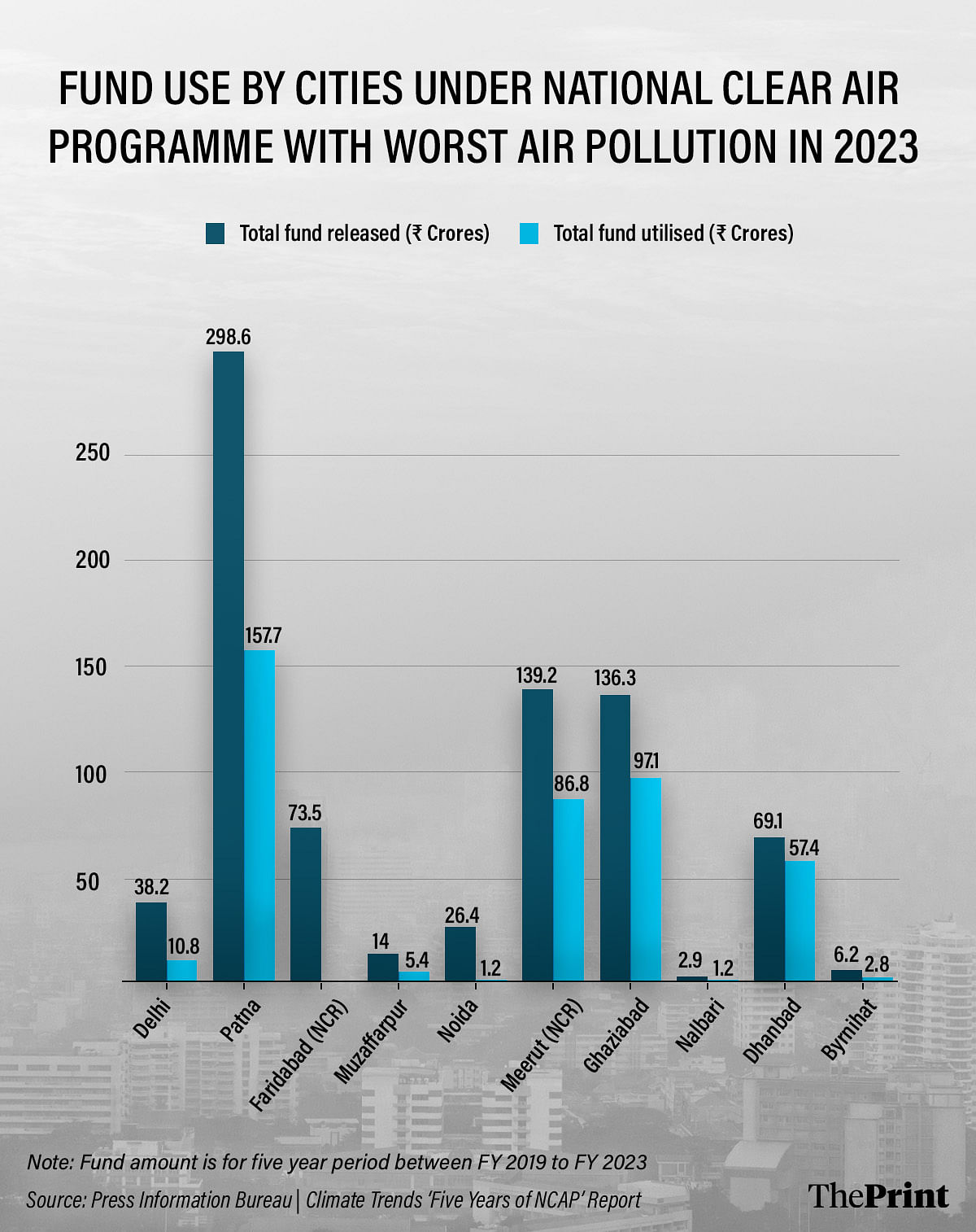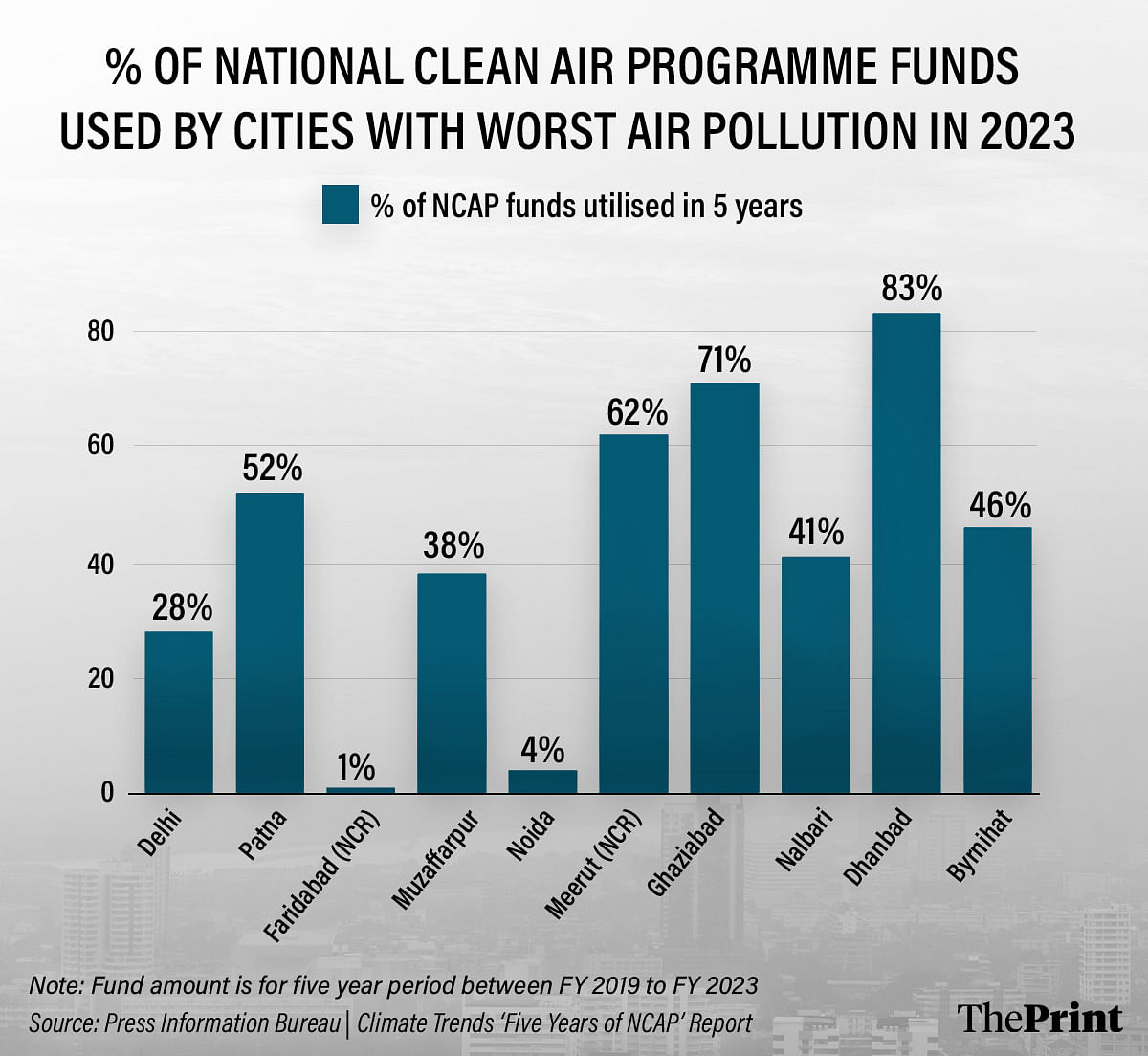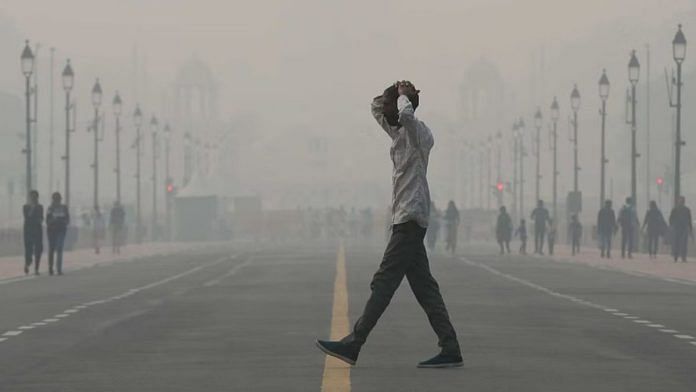New Delhi: A small industrial town in Meghalaya, Byrnihat, and not Delhi, is the “most polluted” city in India, according to the ‘Tracing The Hazy Air 2024’ report released by the Centre for Research on Energy and Clean Air (CREA) Wednesday.
The report reviews the progress made by the National Clean Air Programme (NCAP), a Ministry of Environment, Forests and Climate Change scheme that completed five years Wednesday. NCAP aims to reduce air pollution by reducing concentrations of particulate matter (PM) of less than 2.5 micrometers in diameter (or PM2.5) and PM10 in the air by 20-30 percent by 2026. The NCAP scheme disburses yearly funds to cities under the programme, and tracks their progress. Particulate matter of less than PM 2.5 in size is believed to pose the greatest health risk.
While the air pollution in the national capital has been a cause of concern for years, Wednesday’s report shows air quality in Byrnihat (near the Meghalaya-Assam border) was below the national average for 324 of 347 recorded days in 2023.
Byrnihat was closely followed by Bihar’s Begusarai, when it came to the concentration of PM10 and PM2.5 in the air, while Greater Noida, Delhi, and Patna also made it to the list of most polluted with respect to PM10 and PM2.5 concentration.
According to the report, of the ten cities with the worst air pollution in 2023, six were not even even covered in the NCAP scheme. This included Begusarai. The NCAP was initiated in 2019 with 100 cities, and has now been extended to 131 cities.
However, according to CREA’s data, there are at least 118 more cities where average air quality in 2023 was below the national ambient air quality standards, but they aren’t covered by NCAP.
“But its not just a question of utilising money [funds], we also need to look at where the money is being spent,” cautioned Anumita Roychowdhary, executive director, research and advocacy, Centre for Science and Environment.
Also read: What is the Punjab groundwater conservation law & why it’s being blamed for Delhi’s air pollution
NCAP funds use
On looking at data from the Central Ambient Air Quality Monitoring Stations set up by the Central Pollution Control Board, the report found that not every city had daily air quality data. The report only includes cities with data for 75 percent of the days of the year.
According to a Press Information Bureau (PIB) release in December last year, the National Clean Air Programme released a total fund of Rs 9650 crores for 2019-2023 financial years for all cities. This was divided into Rs 1292.50 crores for NCAP cities and Rs 8357.51 for cities with a population of more than a million (excluding Delhi and Srinagar).
However, only about 65 percent of the total funds disbursed have been used by cities, shows the PIB data.
In light of these challenges, it is crucial to examine the effectiveness of the National Clean Air Programme and its impact on urban air quality management.

While none of the 10 cities with worst air pollution used 100 percent of the funds disbursed to them, a few, including Delhi, have barely used 50 percent of the funds received. Cities like Faridabad, and Noida barely made a dent as they used only 1 percent and 4 percent of their funds respectively in the funds allocated to them by the National Clean Air Programme.
According to Roychaudhary, the reason for the limited usage of funds is the lack of robust planning and implementation.
“Most of these NCAP funds are given to local urban bodies, but they don’t have control over all the sources of pollution. Air pollution needs a multi-sector approach, and cannot only be solved by local authorities,” she explained.
Roychaudhary added that combating dust, vehicular emissions, construction, and industrial effluents all require the cooperation of different governance sectors.
‘Source appointment studies incomplete’
The CREA report also found a lack of source apportionment studies — the process of identifying different sources of air pollution in a city — as part of the NCAP scheme.
“One-hundred-thirty-one cities were supposed to finish their source apportionment studies by 2020. It is now 2024 and only 44 cities have done it,” said Sunil Dahiya, an analyst at CREA and the co-author of the report.
Dahiya added: “If you don’t have knowledge about the source of pollution, how will you allocate funds to combat it? So much money is spent on dust control – cleaning roads with a mechanical sweeper which is a waste of public funds,” he continued.

The CREA report emphasises the need to have a penalisation mechanism to convince cities to conduct source apportionment studies at the earliest. It also draws attention to the lack of air quality monitoring data in the country, and the need to revise the number of cities under NCAP. There are 500 functional Continuous Ambient Air Quality Monitoring Stations in the country, which is a good number according to the report. However, the programme planned to have at least 1,500 manual air quality monitoring stations across the country by 2024, but as of now, there are only 931.
The authors pointed out there are 118 cities that do not fall under NCAP have high pollution levels. “What about the cities that don’t even have air quality monitoring? Their pollution levels go unrecorded, but the impact on people’s health doesn’t,” emphasised Dahiya.
(Edited by Poulomi Banerjee)
Also read: Delhi, Mumbai, Kolkata rank among world’s 10 most polluted cities post-Diwali






